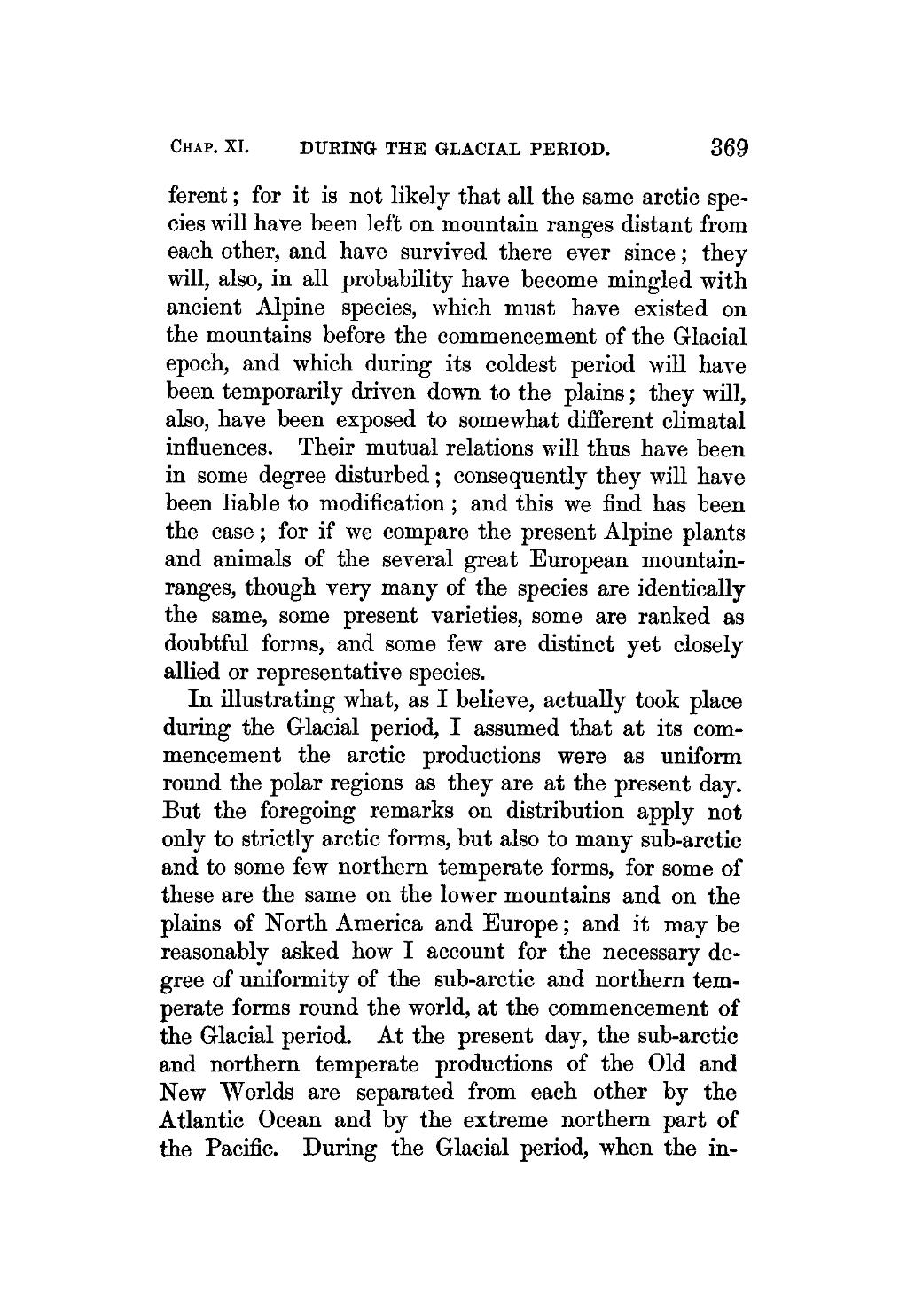ferent; for it is not likely that all the same arctic species will have been left on mountain ranges distant from each other, and have survived there ever since; they will, also, in all probability have become mingled with ancient Alpine species, which must have existed on the mountains before the commencement of the Glacial epoch, and which during its coldest period will have been temporarily driven down to the plains; they will, also, have been exposed to somewhat different climatal influences. Their mutual relations will thus have been in some degree disturbed; consequently they will have been liable to modification; and this we find has been the case; for if we compare the present Alpine plants and animals of the several great European mountain-ranges, though very many of the species are identically the same, some present varieties, some are ranked as doubtful forms, and some few are distinct yet closely allied or representative species.
In illustrating what, as I believe, actually took place during the Glacial period, I assumed that at its commencement the arctic productions were as uniform round the polar regions as they are at the present day. But the foregoing remarks on distribution apply not only to strictly arctic forms, but also to many sub-arctic and to some few northern temperate forms, for some of these are the same on the lower mountains and on the plains of North America and Europe; and it may be reasonably asked how I account for the necessary degree of uniformity of the sub-arctic and northern temperate forms round the world, at the commencement of the Glacial period. At the present day, the sub-arctic and northern temperate productions of the Old and New Worlds are separated from each other by the Atlantic Ocean and by the extreme northern part of the Pacific. During the Glacial period, when the in-
